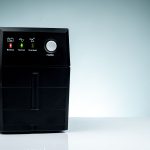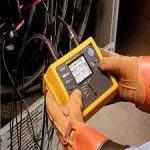The Importance of Installing a Lightning Protection System
The National Weather Service says there are 25 million lightning strikes in the U.S. each year, many of which strike commercial buildings and homes. To scale the issue, the Insurance Information Institute reports that the 2021 value of claims payouts for lightning damage just to residences was $1.313 billion. The solution for preventing damage is to install a lightning protection system.
The National Oceanic and Atmospheric Administration says the average lightning bolt contains approximately 300 million volts. Cloud-to-ground lightning is the most common in which the lightning travels a channel toward the earth’s surface. When it reaches within approximately a hundred yards of the ground, objects will send up sparks to connect with the lightning. One of the roles of the lightning protection system is to connect with the lightning channeling to the building and direct the electrical charge to a point where it becomes harmless.
Basics of the System
A lightning protection system is designed to control the energy lightning creates and disperse it to a ground point. The goal is to direct the electrical charge so it does not harm people or anything inside the building connected to the electrical system. The system is also designed to ensure that the intense lightning heat does not cause damage to the building itself.
Unless directed and dispersed, a lightning strike can start a fire when it reaches flammable material; damage appliances, computers, and electronics connected to an electrical system; damage the electrical system components; and damage the building itself.
The system does not repel or attract lightning. The whole-house or whole-building certified system creates a harmless path for lightning.
Elements of a Quality System
A lightning protection system that meets national safety standards consists of the following:
- Strike termination devices for the roof
- Conductor cables that direct the energy down
- Bonding (connecting metallic objects to the lightning system to prevent sideflashes)
- Ground connections
- Surge arrestors or protection devices at every electrical service entrance
Sideflash occurs when lightning strikes something, and the charge jumps through the air to a person or object. For example, lightning may hit a home’s gutters and then jump to the propane gas tank on the barbecue sitting on the deck, likely causing an explosion or starting a fire. The bonding element is the connection of the lightning protection system to other internal grounded metallic systems to prevent sideflash.
Lightning protection materials should comply with Underwriters Laboratories, Inc. (UL) Standard 96, the Lightning Protection Institute Code 175, and the National Fire Protection Association Standard 780.
Lightning Protection System
Careful design and quality materials are critical to a successful system that protects buildings, contents, and, most importantly, lives. Each lightning protection system is custom designed for the building’s external and internal features. An added benefit is that a quality system can also increase property value.







